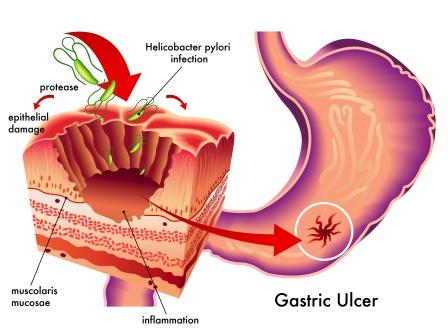Kledaka Kapha – Location, Functions, Imbalance, Treatment
By Dr Raghuram Y.S. MD (Ay) & Dr Manasa, B.A.M.S
Kleda means moist. Kledaka means that which causes moistness.
In this article, the term the term kledaka is discussed in relation to kapha. Kledaka Kapha is one among the five subtypes of kapha.
Table of Contents
Introduction
Kledaka Kapha is ‘that kapha being located in the stomach, on receiving the food, gets mixed with it and moistens it so as to prepare it into a bolus’. This would allow the food to be digested as a single mass.
Read – Sub Types Of Kapha – Importance, Salient Features
Location
Seat of Kledaka Kapha
Kledaka Kapha is formed and located in stomach. Formation happens during first stage of transformation of food i.e. madhura avastha paka. This includes all changes occurring in the food from mastication of food in mouth to the chymification of same in stomach.
Food we consume undergoes three stages of transformation at three different sites of gastrointestinal tract. These stages are called avastha paka (avastha = stage, paka = digestion)
Transformation of food taking place in stomach after the masticated food enters it is called madhura avastha paka. Madhura means sweet. Here, in stomach, during this stage of digestion, all foods immaterial of the taste are converted into a chyme which would carry sweet taste. This rule is majorly applicable for foods which are sweet, sour and salty in taste.
At the end of this sweet predominant transformation of food, the kapha which is also sweet in taste and cold in quality is formed in stomach. This is kledaka kapha. This is foamy in nature.
Owing to the sweetness, stickiness and moistness of food entering stomach, the kapha which is sweet and cold in nature is formed in stomach.
Read – Types Of Doshas And Their Functions
Sanskrit verse

Functions
Functions of Kledaka Kapha
Anna sanghata kledana –
Moisten and produce unctuousness in food entering stomach.
We take various kinds of food, which includes solid, semisolid and liquid foods. These foods on reaching stomach will come into contact with kledaka kapha located in stomach. This kapha would make food mass moist, smooth and unctuous and brings it into a form which can be easily digested.
Read – Understand Kapha Dosha By Its Functions
Moistens food
Bhinna sanghata sukha jaro bhavati
Action of kledakam kapham on food not only moistens it but also would break complex food molecules into smaller and less complex components. When the food is broken into smaller components the food would be easily digested.
Read – 11 Ayurvedic eating tips for good health
Anugraha
Shesha Kapha Sthana Anugrahanam –
According to Sushruta, kledaka kapha located in stomach controls other kapha subtypes and their abodes by virtue of its inherent strength and power. Thus, stomach and moistening kapha are control stations of activities of other kapha subtypes and their abodes.
Balance of kledaka kapha would ensure balance of other kapha abodes and the residing kapha subtypes i.e. avalambaka kapha located in chest cavity, tarpaka kapha located in head, shleshaka kapha located in joints and bodhaka kapha located in tongue.
Imbalance in kledaka kapha would create functional imbalance of other subtypes of kapha too. It not only controls other subtypes of kapha but also nourishes entire body. This is possible owing to udaka karma or water-like nourishing and refreshing activity of kapha.
Contrary to this, Vagbhata is of opinion that it is Avalambaka Kapha located in chest cavity which is the chief governing kapha and it controls other subtypes of kapha being located in chest cavity owing to its nourishing property (ambu karma or water like functions).
Read – 8 Factors Pertaining To Food Intake – Ahara Vidhi Vishesha Ayatana
Nullifies burning
Counteracts the corrosive and burning effect of pitta –
Seat of kapha is said to be located above the seat of pitta. In this context the seat of kledaka kapha i.e. stomach is anatomically placed above the seat of pachaka pitta i.e. small intestine, duodenum to be precise. This also means that a water body is placed over a fire body, beauty of creation.
Kledaka kapha, thus, always check on hyperactivity of pachaka pitta. If pachaka pitta is hyperactive, it leads to production of severe heat in intestines, this will have an impact on other pitta subtypes of body, ultimately leading to increased heat and burning sensation all over body. This will eventually lead to corrosion and inflammation. This is a dangerous phenomenon.
Read – Understanding Digestion Process From An Ayurveda View
Presence of avalambaka kapha which is watery and cool in nature above the hot and corrosive pitta will buffer the activities of pitta (pachaka pitta) and thus keeps it under control. This will also enable pachaka pitta not to go out of sorts and indulge itself in properly digesting food without causing any complications.
This phenomenon of kledaa kapha acting as a buffer to pachaka pitta is explained with the help of a simply. Just as Moon is placed to counteract the heat of Sun by its coolant property in nature, the kledak kaph is placed in body to counteract heat of pachaka pitta owing to its coolant property in human body.
Pachaka Pitta is produced in stomach also. But buffering the acidic behavior of pitta, the kledaga kapha protects mucus membrane and muscles of stomach from getting damaged and eroded.
Read – Understand Pitta Dosha By Its Functions
Pathology
Pathology related to Kledaka Kapha imbalance
When there is kledak kapha imbalance, many diseases of gastrointestinal tract sets in, especially the diseases of the stomach.
Excessive production of kledaka kapham produces diseases like dyspepsia, indigestion, anorexia, nausea, vomiting, sinusitis and coryza, heaviness, laziness and lethargy, excessive sleepy etc.
Read – Activities And Diet For Kapha Balance
Deficit production of kledaka kapha means lack of protection of stomach and intestines from the corrosive action of pitta. This leads to many diseases like gastritis, reflux esophagitis, gastric erosion, peptic ulcers etc.
Since kledaka kapha controls other kapha subtypes, imbalance of this kapha would have an impact on other kaphas too. This would lead to pathological manifestations of other kapha subtypes in their respective seats.
Read – Kapha Decrease Symptoms, Analysis, Treatment

Probable Modern Correlation
Seeing similarity in terms of anatomy and physiology of kledaka kapha, it can be closely correlated with gastric mucus secretions i.e. gastric mucin.
Read – GERD, Heartburn: Causes, Symptoms, Ayurvedic Treatment, Tips, Remedies
Sri Dwarakanath, the author of ‘Introduction to Kayachikitsa’ has correlated kledaka kapha with gastric mucin. Description of mucin secreted by mucoid cells of cardiac and pyloric glands of stomach resembles that of kledaka kapha. Gastric mucin, like kledaka kapha is secreted in varying quantities from what is known of its functions. It seems to serve three essential purposes i.e.
- Buffers the strong acids
- Inhibits action of pepsin
- Moistens the food by loosening molecules, especially the protein molecules before they are acted upon by pepsin
Treatment:
Vamana, Virechana, coolant herbs like Shatavari, Kaparda, Shankhabhasmam etc are used for treatment.
Click to Consult Dr Raghuram Y.S. MD (Ayu) – Email / Skype









